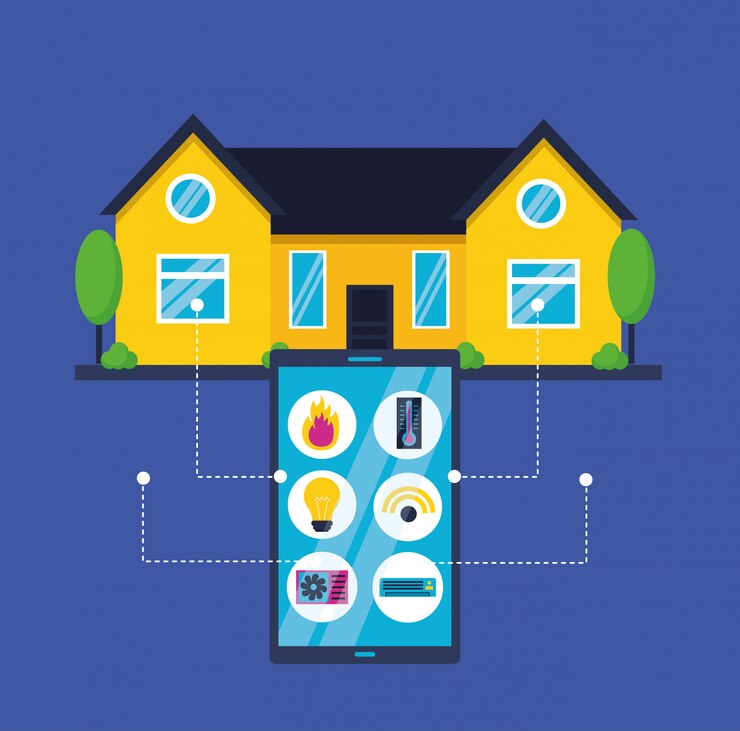What Are the Key Features of Successful Home-Service Apps?
In today’s fast-moving digital world, users want quick, reliable services at their fingertips. Home-service apps fill this demand by connecting...

In today’s fast-moving digital world, users want quick, reliable services at their fingertips. Home-service apps fill this demand by connecting users with professionals who can fix plumbing issues, clean homes, repair appliances, or handle electrical work—all through a few taps on a smartphone. But with increasing competition, what sets a top-performing app apart from the rest?
Below are the key features that power the success of today’s most effective home-service platforms.
User-Friendly Interface
The first impression of an app decides whether users stay or uninstall. A clear layout, easy navigation, and fast loading times play a major role in user retention. Users should feel confident while browsing categories, searching for services, or booking appointments for on demand home service. Providing a seamless experience with intuitive design and quick response times is crucial for maintaining engagement and trust, ensuring users keep coming back for their home service needs.
Simple Onboarding
Users expect a quick sign-up process. Top apps allow login through phone numbers, emails, or social media. They also minimize the steps required to set up an account. A smooth start helps new users feel more confident in the platform.
Intuitive Navigation
Service categories must be clearly displayed. Smart search filters and suggestions help users find the exact professional they need. Buttons, icons, and calls to action should feel natural and well-placed.
Real-Time Booking and Scheduling
Time plays a key role in service-based businesses. An app that allows users to view professional availability, book instantly, or schedule at a convenient time wins user trust. Live calendars and time-slot options keep the process simple and fast.
Instant Confirmation
After selecting a service, users expect confirmation within seconds. Instant booking reduces uncertainty and helps reduce user drop-offs. Push notifications can keep users updated about bookings, arrival times, and delays.
In-App Communication
Direct communication between users and service providers builds trust. Whether it’s for sharing instructions, confirming addresses, or clarifying job scope, secure chat or call options inside the app make a huge difference.
Secure Messaging
Built-in chat features allow users to talk to professionals without sharing personal phone numbers. This adds a layer of safety while making communication more efficient.
Live Tracking
Some leading home-service apps now include GPS tracking so users can monitor a provider’s route and estimated arrival. This reduces uncertainty and saves time for both parties.
Verified and Vetted Service Providers
People don’t just want fast service—they want reliable professionals. Apps that screen their service providers through background checks, ID verification, and skill assessments build stronger reputations.
Rating and Review Systems
After a job is done, users should be able to rate the provider and leave a review. This not only helps future customers but also gives providers motivation to maintain high standards.
Transparent Pricing
Unclear pricing often leads to frustration. Users prefer apps that show clear cost estimates before booking. Some apps use service calculators based on time, complexity, or materials to give accurate quotes upfront.
No Hidden Charges
Breaking down service fees, taxes, and extra charges prevents disputes. Displaying the final cost early builds trust and improves satisfaction.
Multiple Payment Options
Offering different payment modes helps attract a wider user base. Whether users prefer cards, mobile wallets, net banking, or cash, flexibility improves convenience.
Secure Transactions
Strong encryption and compliance with security standards protect user data. Payment confirmation messages and digital receipts help maintain transparency.
Loyalty Programs and Promotions
Incentives can keep users coming back. Apps that reward frequent bookings with discounts, referral bonuses, or cashback tend to retain more customers over time.
Customized Offers
In home services app development, apps can use booking history to suggest relevant deals or offer discounts for similar future services, keeping the experience fresh and rewarding.
Multi-Language and Regional Support
Serving a diverse population means catering to users in their preferred languages. Apps that include regional language options and local currency settings tend to attract users in smaller cities and towns.
Localized Service Listings
Highlighting local professionals and tailoring listings based on location ensures that users see the most relevant services. This also supports providers from nearby communities.
Feedback Loops and Customer Support
No app is perfect, but strong support systems make problems easier to handle. Whether through live chat, help tickets, or call centers, assistance should be easy to reach.
Quick Resolution
Fast complaint handling and issue resolution improve user trust. Following up on feedback and acting on reviews helps apps maintain service quality.
Regular Updates and Bug Fixes
Apps that release frequent updates tend to stay ahead. Fixing bugs, introducing new features, or upgrading UI/UX regularly keeps the platform fresh and reliable.
Beta Testing New Features
Before launching major changes, some apps test updates with a small user base. This helps identify potential issues early and improve the final product.
Integration with Smart Devices
With smart homes on the rise, integrating voice assistants like Alexa or Google Home offers hands-free control. Mobile app development enhances this by enabling features like booking a plumber or checking appointment status via voice commands, creating a seamless and futuristic user experience.
Conclusion
The home-service app market continues to grow as users seek faster, safer, and more flexible ways to get things done. Apps that focus on user experience, trust, communication, and convenience lead the way. By delivering reliable features backed by strong technology and responsive support, these platforms not only attract users—they keep them.
If you’re planning to build or improve a home-service app, prioritizing these features can help set your platform up for long-term success.




